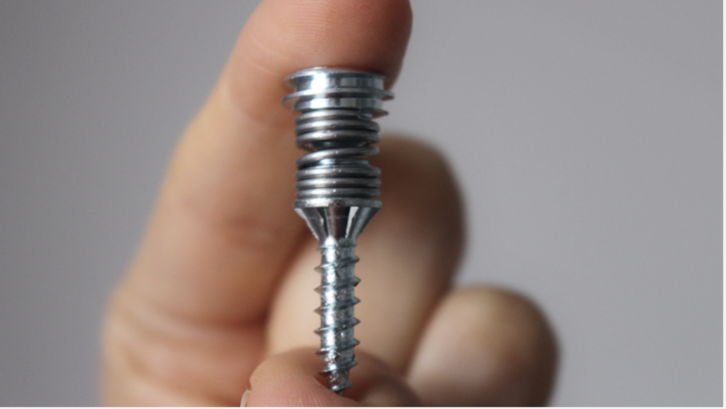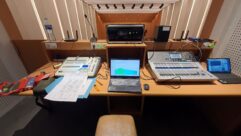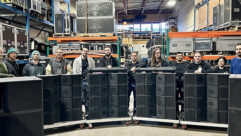
Meet the acoustic Sound Screw. Swedish scientists have developed a small, inexpensive construction option for soundmasking and acoustics, in the form of a spring-loaded sound-damping screw.
It’s full name is the Revolutionary Sound Absorbing Screw (Sound Screw for short). A team at Malmö University, led by senior lecturer Håkan Wernersson came up with the screw. It consists of a threaded section at the bottom, a coil spring in the middle, and a section with a flat head at the top.
The screw is inserted into a hole drilled through a drywall panel and into the joist. It is then turned until its threaded section is all the way into the wood, and its head is sitting flush against the outside surface of the drywall. The spring forms of a gap of a few millimeters between the joist and the drywall’s underside.
When sound waves from an adjacent room travel through the wooden joists and into a wall’s Sound Screws, the compliant springs in the screws limit the transmission of the vibrations into the drywall. As a result, people in the room hear less of the noise, the researchers explained.
In lab tests with traditional drywall panels, researchers claim Sound Screws reduced through-the-wall sound levels by 9 decibels, which worked out to about half the perceived sound when traditional screws were used. The technology also performed well when trialled on the ceiling of a hair salon, where the existing standard screws were simply replaced with Sound Screws.
Wernersson tells us that the screws are already available in Sweden (via spinoff company Akoustos), and that his team is interested in licensing the technology to a commercial partner in North America.
“The initial price is quite high for a screw, but cheap for a sound insulation system,” he says. “The cost will decrease with volume.”
Source: Acoustic Sound Screw news release
Håkan Wernersson, based at the Department of Materials Science and Applied Mathematics, has developed a screw that can halve the perceived sound level.
While the principle of a resilient contact removing soundwaves is not new, the method by which it is applied, is. In addition, if this screw is used as part of the construction of properties, it can also save floor and ceiling space by reducing the thickness of materials require to construct buildings.
“With our screw, you can mount plasterboard directly to the walls, freeing up floor space, and a square metre of floor space can be worth thousands,” says Wernersson, who developed the screw in collaboration with an acoustician.
Disturbing noise from neighbours or traffic outside — and also between rooms — is a common problem in homes and workplaces. The sound-absorbing screw simplifies sound insulation and is particularly suitable for construction with wooden joists, where the acoustic challenges are greater than buildings constructed from concrete.
The Sound Screw breaks soundwaves; in principle, the screw is split in the middle with a spring placed inside. The screw tip goes into the wooden joist, the head holds the plasterboard in place and in between a thin resilient mechanical coupling that prevents the sound waves from advancing is formed.
“The dynamic causes the soundwaves to be dampened,” says Wernersson.
The research project was recently included in the Royal Swedish Academy of Engineering Sciences’ (IVA) 100 list of 2021, where beneficial research is highlighted. The business model is based on offering companies the right to manufacture and/or sell the screw. Wernersson and collaborator Raimo Issal are now looking for more companies that want to test the product on a slightly larger scale.
“It has not entered the market yet, and we therefore need more examples of projects or installations where the screws are used,” says Wernersson. The screw has already met with great interest from around the world, including Japan and South America.
Tests in a sound lab show a sound reduction of nine decibels for a traditional dry wall, which corresponds to a halving of the perceived sound level. Installations in a hair salon also showed good results, where standard screws were replaced with the new screws without removing the existing plaster board in the ceiling.
“There are legal requirements for partitions and certain noise levels when building apartment blocks. Those are not compulsory when it comes to detached houses where only a single family resides, but there, of course, is an excellent solution for reducing noise between rooms,” says Wernersson.
Text by Magnus Jando & Adrian Grist










